The Top Four Types of Commercial Dump Trailers
Pros and Cons of each
If you’re trying to determine which type of dump trailer is right for your business, you’ll need to consider the pros and cons of the four main types of dump trailers. Side dumps, end dumps, belly dumps and live floor trailers all have a similar purpose – to move aggregates or bulk material from one job site to another. All of these trailers are unique in their design and they all unload their cargo differently which represents their unique differentiation. What you’re hauling, weight restrictions and landscape or terrain will help you determine the right dump trailer for your business. This article will take a look at these four most popular types of commercial dump trailers on the market. Companies and industries across Canada and the US use a combination of these trailers to take care of nearly all their commercial dump trailer needs.
Which dump trailer is right for your business? Which brand should you buy? Well, let's look into it.
End Dump Trailers
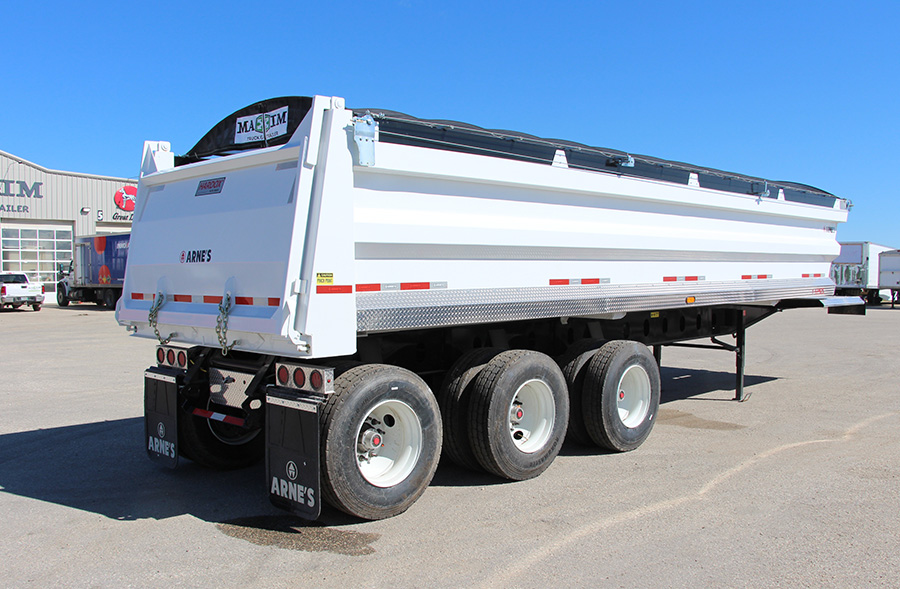
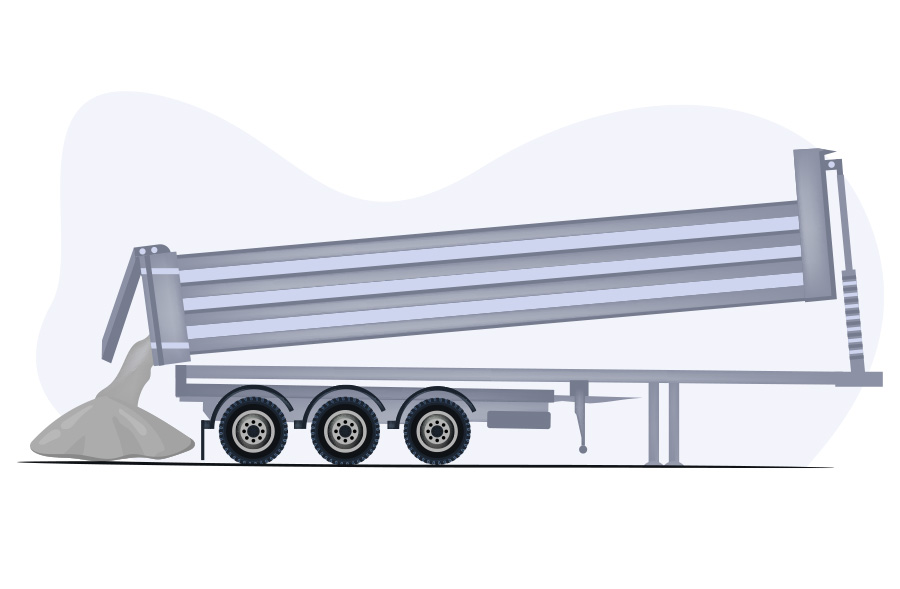
What are they?
End dump trailers have been the most common dump trailers for many years. End dump trailers are named after their loading method. The front of the box is pushed up into the air via hydraulics allowing the materials to fall out of the back gate. Most commercial end dumps range in length from 26 to 40 ft and is commonly tandem or tridem axle configurations.
Industries & Uses
End dumps are commonly used in construction (specifically road and building construction), as well as in the agriculture industry and aggregate stockpiling fields.
The best features of end dump trailers
- They typically have higher sides than other dump trailers, allowing them to stock higher and heavier loads.
- End dumps are very durable and incredibly versatile.
- Good for unloading in tight spots.
- End dumps offer rapid unloading.
- They can handle many different types of materials including larger rocks, demolition debris and even semi-liquid material that can be accommodated via a leak-proof tailgate.
The downsides of end dump trailers
- They are generally the least stable trailers when unloading.
- They are harder to maneuver and usually need someone quite skilled at moving trailers to operate them efficiently.
- It becomes difficult to unload them when not on stable or level ground.
- They require a specially sealed back tailgate to effectively haul semi-liquid material that doesn’t spill out the back of the trailer.
Summary
We carry and recommend Arne’s Manufacturing for steel end dumps and East Manufacturing for Aluminum end dumps. These are the best end dumps in the business. They carry multiple configurations including tandem and tridem, and stand up to the tough conditions demanded of end dump trailers.
Side Dump Trailers
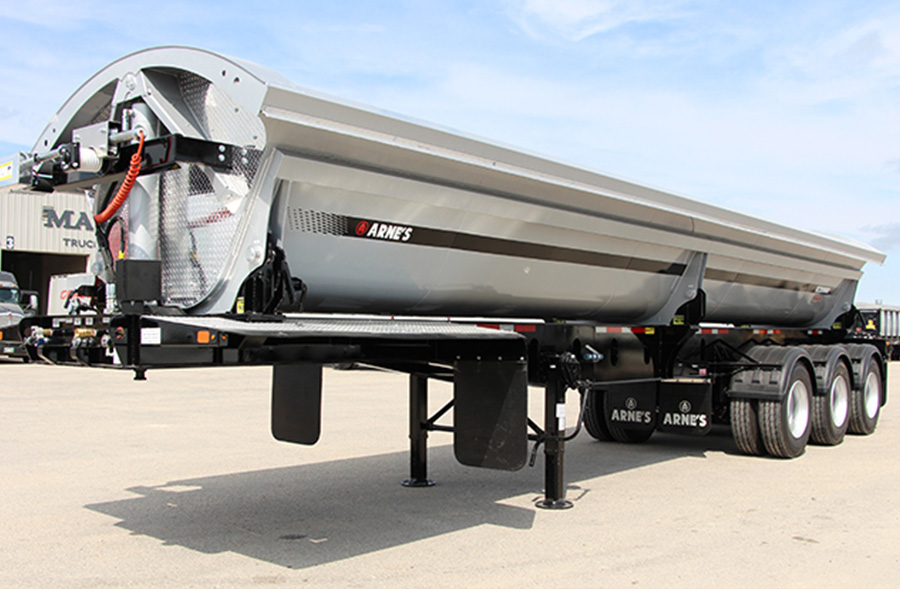
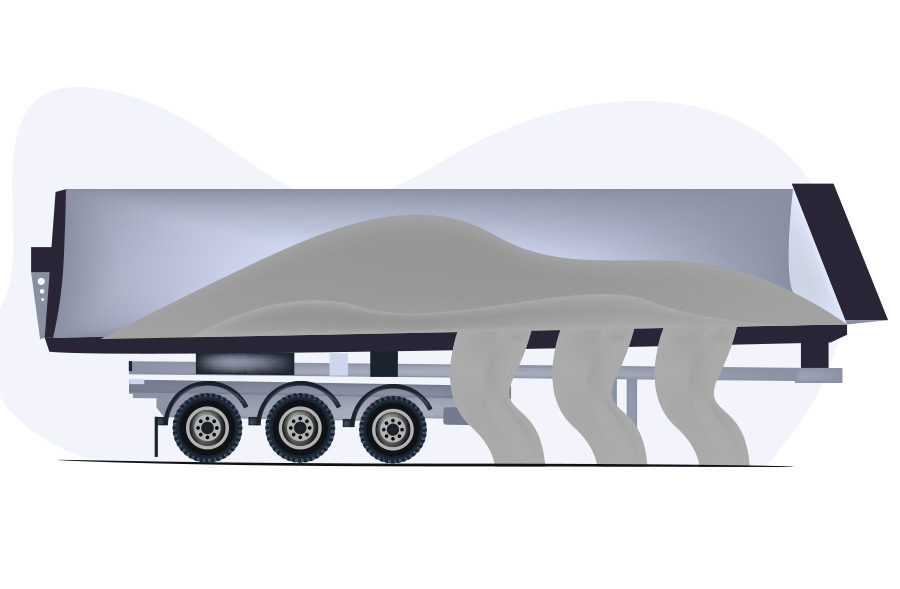
What are they?
Side dumps are named after their unloading capabilities. Using hydraulic rams, side dumps unload the cargo off the right or left side of the trailer and can do so without requiring the air ride suspension to be deflated beforehand.
Industries & uses
Side dumps are heavily used in the construction and waste disposal industries and are used when building roads, pit mining, excavating, transporting semi-liquids, performing stockpile dumps and moving fine materials.
The best features of side dump trailers
- Side dumps are typically very stable when dumping.
- Side dumps have very fast unloading cycles – as quick as 10 seconds to dump the load which makes them ideal in environments where unloading times are critical.
- Side dumps can handle large boulders and other bulky materials that aren’t suited for the other dump trailers
- They’re typically very easy to use.
- You can dump on uneven ground.
- The tub of a side dump is watertight so semi-liquid material doesn’t leak when hauling
- Side dumps can be dumped while the trailer is moving.
The Downsides of Side Dump trailers
- Due to their tub builds, they typically carry less cargo than the other two types of dump trailers – although side dumps do come in Super B configurations to compensate.
- Some dump sites are not configured well for side dumping.
- It can be hard to maneuver them in confined spaces.
Summary
We carry and recommend the Arne’s Manufacturing brand of Side Dump trailers because they are incredibly durable and stable side dumps with large load capacities, easy-to-use controls, tandem, tridem or Super B configurations and many other features people look for in a solid side dump.
Belly Dump Trailers
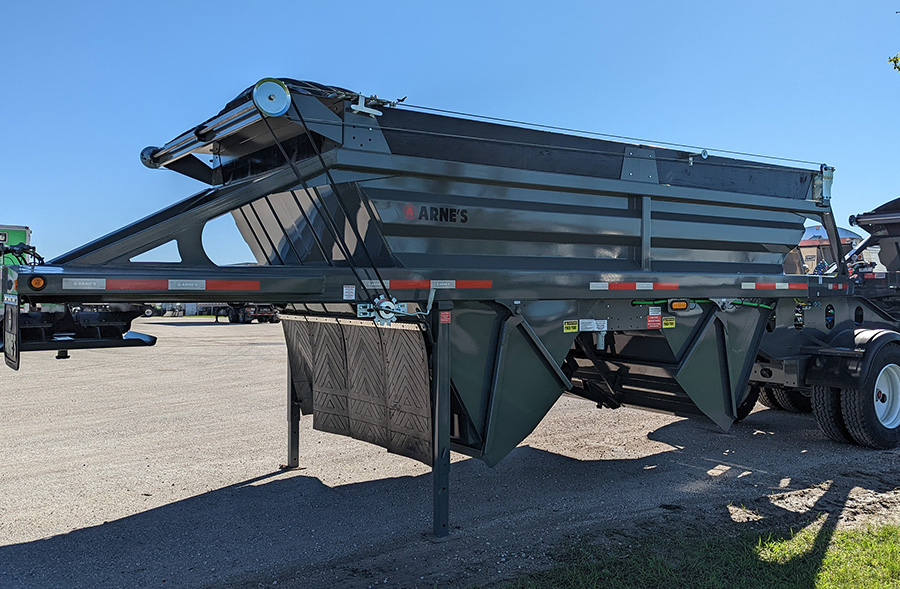
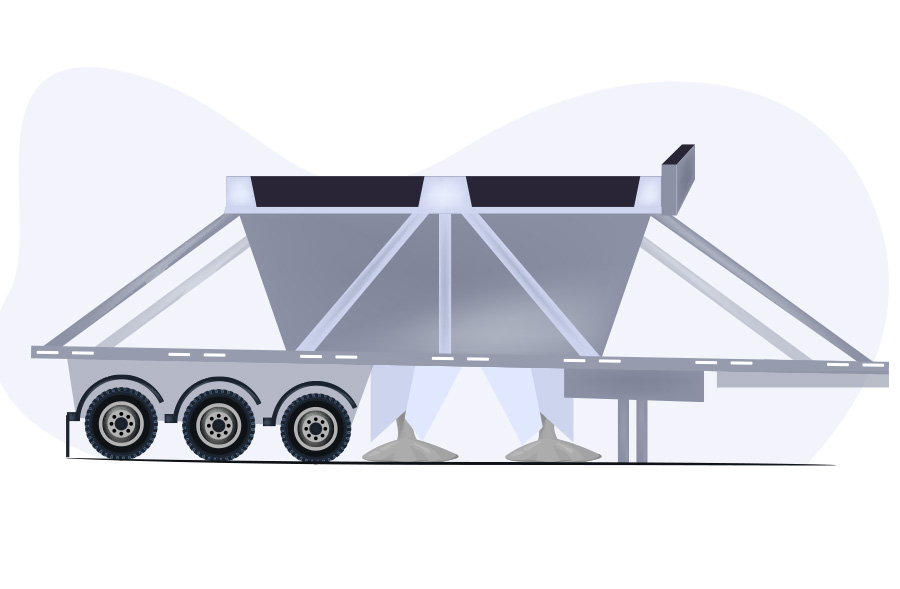
What are they?
Unlike other dump trailers, belly dump trailers (also known as bottom dump trailers and cross gate trailers) have gates at the bottom of the trailer that open up like a clam shell. While driving at a variety of speeds, these trailers allow the material to drop through the bottom gates in a windrow – a long line of material versus a pile. These trailers are ideally suited to road maintenance that required gravel or asphalt to be spread evenly across large areas.
Industries & Uses
Belly dumps are commonly used in stockpiling and material transport, but they’re particularly good at gravelling roads. These trailers are ideally suited to road maintenance.
The best features of belly dump trailers
- Their unique design helps minimize the total weight, allowing you to load more materials inside.
- They’re very stable since they don’t need to be raised for dumping.
- Unloading allow for windrowing.
The downsides of belly dump trailers
- There are limitations to dumping since there needs to be enough room below the trailer to properly dump their load.
- They’re not suited for hauling large materials since large material would get stuck in the clamshell gates.
- Liquid or really fine material can leak out the bottom, making belly dumps unsuitable to haul such things.
- These trailers are designed more for spreading vs dumping.
Summary
We recommend and carry the Arne’s Manufacturing brand of Cross Gate Hoppers. They’re the more stable and durable belly dump style trailers on the market.
Live Bottom Trailers
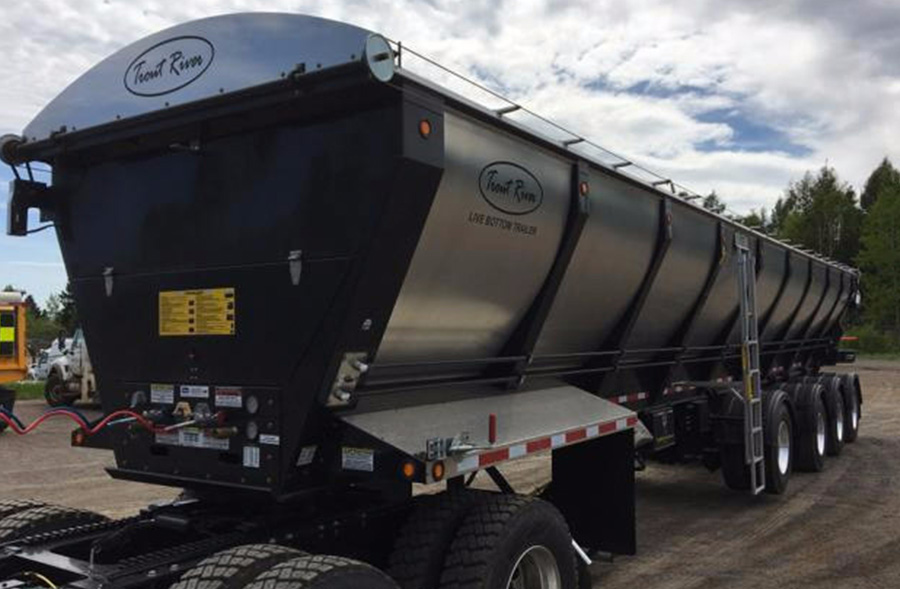
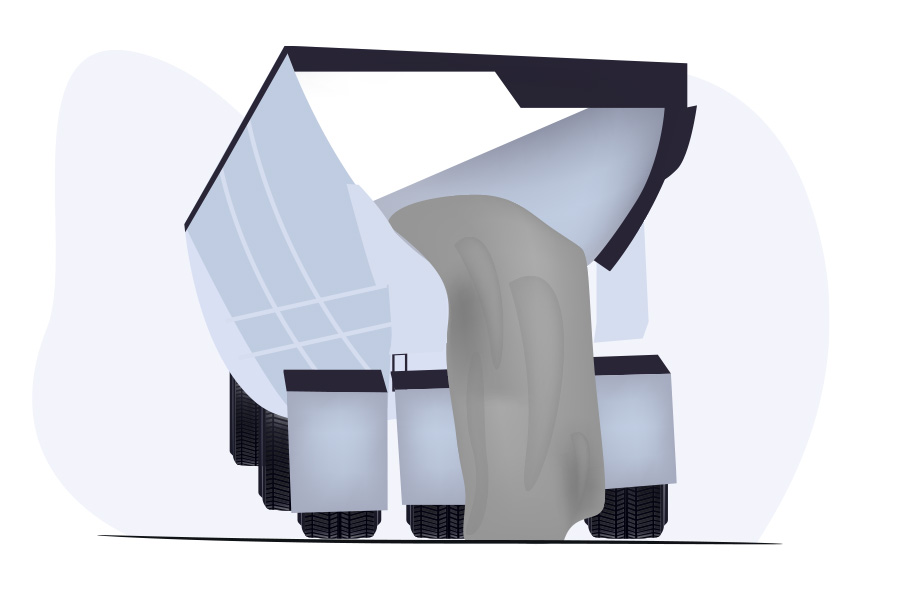
What are they?
Live bottom and belt floor trailers are among the newest of dump trailers on the market. Their unique belt floor allows the material to be dumped out the back of the trailer more precisely that other dump trailers. They generally lead to safer dumps, reduced chance of rollover, and are gentle on your payload.
Industries & Uses
You’ll find Live Bottom trailers in use in a variety of industries including road construction, aggregate hauling and agriculture.
The best features of live bottom trailers
- Virtually zero risk of rolling or tipping over
- Precise unloading with the belt drive - you can unload as much or as little as needed on a job site.
- Because they don’t tip to unload, live bottom trailers can unload indoors
- Very safe as trailer does not lift into the air and can’t get caught on overhead wires,etc.
- Low center of gravity, so loads don't shift when going around corners.
- Promotes an evenly distributed load.
The downsides of live bottom trailers
- Unload times can be longer than other trailers
- Live floor trailers are more costly than traditional dump trailers
- Maintenance of belt, chains etc can be more involved than traditional dump trailers without these moving parts
Summary
We recommend and carry the Trout River Industries line of Live Floor trailers. These trailers are ideal for those needing additional safety features, unloading indoors and have more precise unloading requirements.
Check Out Live Bottom Trailers
For more information on side dumps, end dumps, belly dumps or live floor trailers, feel free to reach out to a Maxim Truck & Trailer and speak to a representative (contact info)





